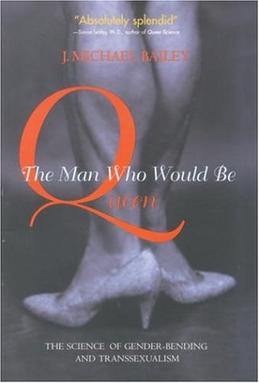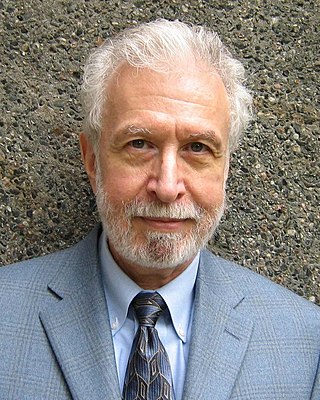Gender dysphoria (GD) is the distress a person experiences due to a mismatch between their gender identity—their personal sense of their own gender—and their sex assigned at birth. The term replaced the previous diagnostic label of gender identity disorder (GID) in 2013 with the release of the diagnostic manual DSM-5. The condition was renamed to remove the stigma associated with the term disorder.
The World Professional Association for Transgender Health (WPATH), formerly the Harry Benjamin International Gender Dysphoria Association (HBIGDA), is a professional organization devoted to the understanding and treatment of gender identity and gender dysphoria, and creating standardized treatment for transgender and gender variant people. WPATH was founded in September 1979 by endocrinologist and sexologist Harry Benjamin, with the goal of creating an international community of professionals specializing in treating gender variance.
The Standards of Care for the Health of Transgender and Gender Diverse People (SOC) is an international clinical protocol by the World Professional Association for Transgender Health (WPATH) outlining the recommended assessment and treatment for transgender and gender-diverse individuals across the lifespan including social, hormonal, or surgical transition. It often influences clinicians' decisions regarding patients' treatment. While other standards, protocols, and guidelines exist – especially outside the United States – the WPATH SOC is the most widespread protocol used by professionals working with transgender or gender-variant people.
The term chronophilia was used by psychologist John Money to describe varying forms of romantic preference and/or sexual fixation limited to individuals of particular age ranges. Some such fixations, specifically those towards prepubescents and those towards the elderly, constitute types of paraphilia. The term has not been widely adopted by sexologists, who instead use terms that refer to the specific age range in question. An arguable historical precursor was Richard von Krafft-Ebing's concept of "age fetishism". Importantly, chronophilia are technically not determined by age itself, but by human sexual maturity stages, such as body type, secondary sexual characteristics and other visible features, particularly as measured by the stages of the Tanner scale.

John Michael Bailey is an American psychologist, behavioral geneticist, and professor at Northwestern University best known for his work on the etiology of sexual orientation and paraphilia. He maintains that male sexual orientation is most likely established in utero.

Richard Green was an American-British sexologist, psychiatrist, lawyer, and author known for his research on homosexuality and transsexualism, specifically gender identity disorder in children. He is known for his behaviorism experiment in which he attempted to prevent male homosexuality and transsexuality by extinguishing feminine behavior in young boys. He later came to favor biological explanations for male homosexuality.

The Man Who Would Be Queen: The Science of Gender-Bending and Transsexualism is a 2003 book by the American psychologist J. Michael Bailey, published by Joseph Henry Press.

Androphilia and gynephilia are terms used in behavioral science to describe sexual orientation, as an alternative to a gender binary homosexual and heterosexual conceptualization. Androphilia describes sexual attraction to men and/or masculinity; gynephilia describes the sexual attraction to women and/or femininity. Ambiphilia describes the combination of both androphilia and gynephilia in a given individual, or bisexuality.

Ray Milton Blanchard is an American-Canadian sexologist who researches pedophilia, sexual orientation and gender identity. He has found that men with more older brothers are more likely to be gay than men with fewer older brothers, a phenomenon he attributes to the reaction of the mother's immune system to male fetuses. Blanchard has also published research studies on phallometry and several paraphilias, including autoerotic asphyxia. Blanchard also proposed a typology of transsexualism.
The American-Canadian sexologist Ray Blanchard proposed a psychological typology of gender dysphoria, transsexualism, and fetishistic transvestism in a series of academic papers through the 1980s and 1990s. Building on the work of earlier researchers, including his colleague Kurt Freund, Blanchard categorized trans women into two groups: homosexual transsexuals who are attracted exclusively to men and are feminine in both behavior and appearance; and autogynephilic transsexuals who experience sexual arousal at the idea of having a female body. Blanchard and his supporters argue that the typology explains differences between the two groups in childhood gender nonconformity, sexual orientation, history of sexual fetishism, and age of transition.
Gender incongruence is the state of having a gender identity that does not correspond to one's sex assigned at birth. This is experienced by people who identify as transgender or transsexual, and often results in gender dysphoria. The causes of gender incongruence have been studied for decades.

Sexuality in transgender individuals encompasses all the issues of sexuality of other groups, including establishing a sexual identity, learning to deal with one's sexual needs, and finding a partner, but may be complicated by issues of gender dysphoria, side effects of surgery, physiological and emotional effects of hormone replacement therapy, psychological aspects of expressing sexuality after medical transition, or social aspects of expressing their gender.
The classification of transgender people people into distinct groups has been attempted since the mid-1960s. The most common modern classifications in use are the DSM-5 and ICD, which are mainly used for insurance and administration of gender-affirming care.

A transsexual person is someone who experiences a gender identity that is inconsistent with their assigned sex, and desires to permanently transition to the sex or gender with which they identify, usually seeking medical assistance to help them align their body with their identified sex or gender.

James M. Cantor is an American-Canadian clinical psychologist and sexologist specializing in hypersexuality and paraphilias.
Erotic target location error (ETLE) is a hypothesized dimension for paraphilias, defined by having a sexual preference or strong sexual interest in features that are somewhere other than on one's sexual partners. When one's sexual arousal is based on imagining oneself in another physical form the erotic target is said to be one's self, or erotic target identity inversion (ETII).
Analloeroticism is having no sexual interests in other people. Anil Aggrawal considers it distinct from asexuality and defines the latter as the lack of a sex drive. Analloerotics are unattracted to female or male partners, but not necessarily devoid of all sexual behaviour.

Alice Domurat Dreger is an American historian, bioethicist, author, and former professor of clinical medical humanities and bioethics at the Feinberg School of Medicine, Northwestern University, in Chicago, Illinois.
Transgender health care includes the prevention, diagnosis and treatment of physical and mental health conditions, as well as gender-affirming care, for transgender individuals. A major component of transgender health care is gender-affirming care, the medical aspect of gender transition. Questions implicated in transgender health care include gender variance, sex reassignment therapy, health risks, and access to healthcare for trans people in different countries around the world.
Men Trapped in Men's Bodies: Narratives of Autogynephilic Transsexualism is a 2013 book on the subject of autogynephilia and transgender women written by sexologist Anne Lawrence. In the book, she discusses autogynephilia, a paraphilia in which a person is sexually attracted to and aroused by the thought or image of themselves as female. It is defined as an erotic target location error, as a self-directed form of gynephilia, and as a sexuoromantic orientation. Autogynephilia has been theorized by some academics, such as Lawrence, Ray Blanchard, and J. Michael Bailey, to be the motivating etiology for a subset of transgender women. It has also been theorized to be the cause of the feelings and behaviors of certain non-transgender males, including non-transitioning autogynephiles and erotic crossdressers ("transvestites"). In respect to the latter, transvestism has been defined as a subtype of autogynephilia. Lawrence herself is a transgender woman and self-identifies as autogynephilic. However, Blanchard's etiological typology of transgender women and autogynephilia are highly controversial subjects and are not accepted by many other transgender women and academics. The book was published in 2013 by Springer in New York.







